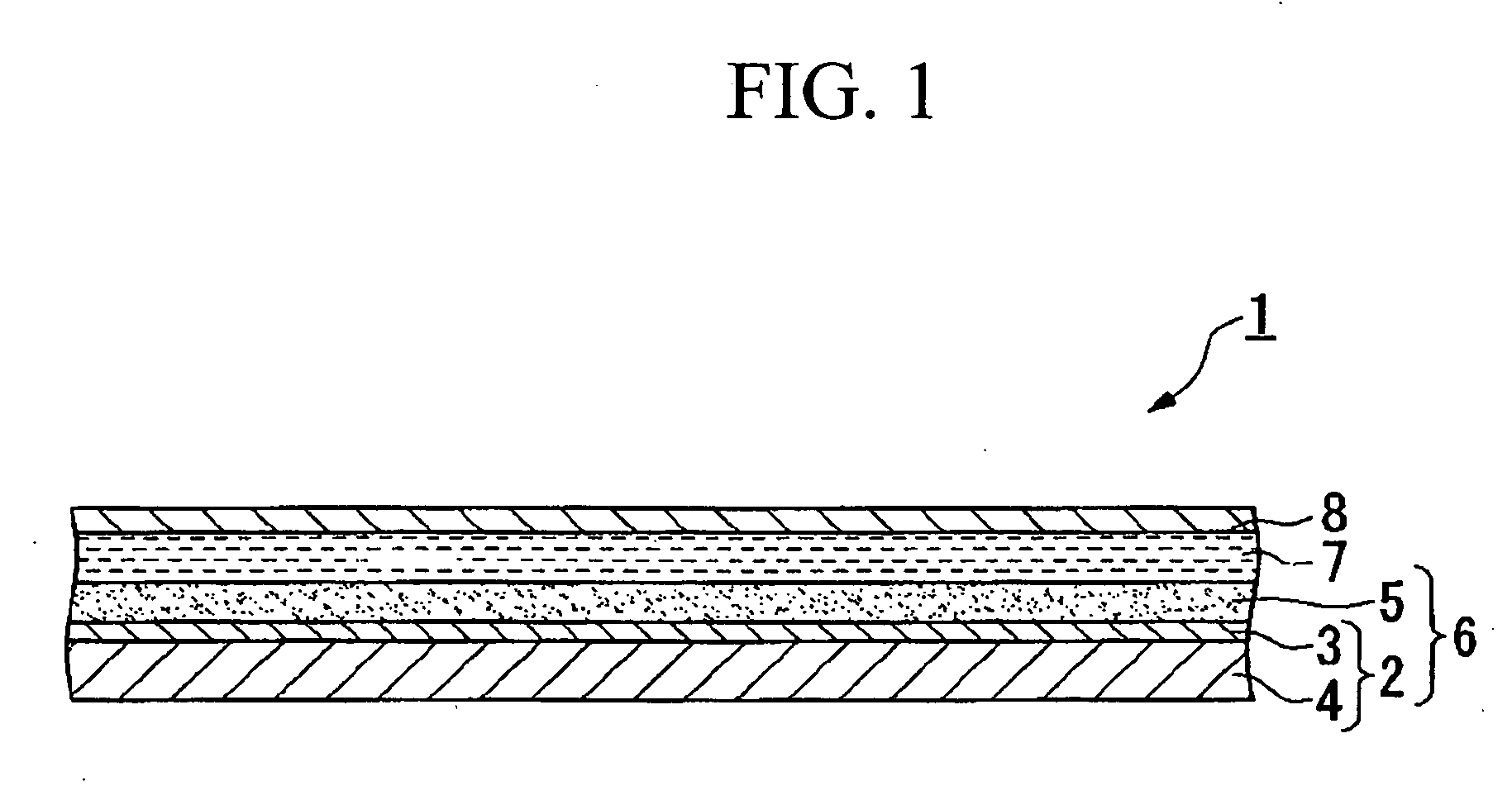Electrolyte compositon, photoelectric converter and dye-sensitized solar cell using same
a technology of photoelectric converter and solar cell, applied in the field of electrolyte composition, can solve the problems of significant reduction of the conversion efficiency of the photoelectric conversion element, the exposure of the electrolyte solution during the manufacturing process, and the inability to achieve and achieve the effect of stably achieving high output characteristics and photoelectric conversion characteristics
- Summary
- Abstract
- Description
- Claims
- Application Information
AI Technical Summary
Benefits of technology
Problems solved by technology
Method used
Image
Examples
first embodiment
[0039] The present invention will now be described in detail based on a first embodiment of the present invention
[0040] An electrolyte composition according to the first embodiment of the present invention contains an ionic liquid and conductive particles as main components.
[0041] The electrolyte composition according to the first embodiment of the present invention contains the ionic liquid as a first essential component.
[0042] An example of the ionic liquid is, but not limited to, a room temperature molten salt that is liquid at room temperature and contains a compound containing a quaternized nitrogen atom as a cation. The cation of the room temperature molten salt may be quaternary imidazolium derivatives, quaternary pyridinium derivatives, quaternary ammonium derivatives, and the like. The anion of the room temperature molten salt may be BF4−, PF6−, F(HF)n−, bis(trifluoromethylsulfonyl)imide [N(CF3SO2)2−, iodide ions, and the like.
[0043] Specific examples of the ionic liqui...
second embodiment
[0089] The present invention will now be described in detail based on a second embodiment of the present invention An electrolyte composition according to the second embodiment of the present invention contains an ionic liquid (A) and oxide semiconductor particles (B), or an ionic liquid (A), oxide semiconductor particles (B), and conductive particles (C). Furthermore, in a preferred embodiment, the electrolyte composition of the present invention is made into a gel. As used herein, an electrolyte is regarded as a gel if all of 10 cc of the electrolyte that is placed into a columnar glass tube having an inner diameter of 15 mm and a depth of 10 cm does not fall to the bottom after 15 minutes at room temperature (23° C.) when the glass tube is turned upside down.
[0090] The electrolyte composition according to the second embodiment of the present invention contains the ionic liquid (A) as a first essential component.
[0091] An example of the ionic liquid (A) is, but not limited to, a...
third embodiment
[0197] The present invention will now be described in detail based on a third embodiment of the present invention An electrolyte composition of the present invention contains an ionic liquid (A) and insulating particles (C). Furthermore, in a preferred embodiment, the electrolyte composition of the present invention is made into a gel. As used herein, an electrolyte is regarded as a gel if all of 10 cc of the electrolyte that is placed into a columnar glass tube having an inner diameter of 15 mm and a depth of 10 cm does not fall to the bottom after 15 minutes at room temperature (23° C.) when the glass tube is turned upside down.
[0198] The electrolyte composition according to the third embodiment of the present invention contains an ionic liquid (A) as a first essential component.
[0199] An example of the ionic liquid (A) is, but not limited to, a room temperature molten salt that is liquid at room temperature and contains a compound containing a quaternized nitrogen atom as a cat...
PUM
 Login to View More
Login to View More Abstract
Description
Claims
Application Information
 Login to View More
Login to View More - R&D
- Intellectual Property
- Life Sciences
- Materials
- Tech Scout
- Unparalleled Data Quality
- Higher Quality Content
- 60% Fewer Hallucinations
Browse by: Latest US Patents, China's latest patents, Technical Efficacy Thesaurus, Application Domain, Technology Topic, Popular Technical Reports.
© 2025 PatSnap. All rights reserved.Legal|Privacy policy|Modern Slavery Act Transparency Statement|Sitemap|About US| Contact US: help@patsnap.com


